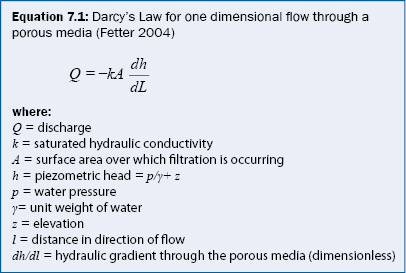
Data Analysis for Capacity Testing
A.J. Erickson, P.T. Weiss, J.S. Gulliver, R.M. Hozalski
The primary function of most stormwater treatment practices is either to infiltrate stormwater (a function of hydraulic conductivity) or capture solids through sediment accumulation. Capacity testing (level 2) is specifically designed to test these two processes.
Testing for hydraulic conductivity
Point measurements of hydraulic conductivity can be used to estimate the overall saturated hydraulic conductivity in a stormwater treatment practice. An example of hydraulic conductivity calculations is provided in Case Study #3 (capacity testing applied to rain gardens).
The arithmetic mean is an adequate estimation of overall saturated hydraulic conductivity if the measurements are evenly distributed throughout the stormwater treatment practice. Most stormwater treatment practices for which hydraulic conductivity testing is appropriate will have spatial heterogeneity in saturated hydraulic conductivity due to variations in soil, sediment deposition, and suspended solids capture within the soil. Assuming one–dimensional flow and using Darcy’s Law (see equation 7.1), at a given water surface elevation, it can be shown that the arithmetic mean of hydraulic conductivity will give an accurate estimate of the flow, and thus an accurate estimate of the time to drain.

Sediment accumulation testing
Point measurements of sediment accumulation depth can be averaged arithmetically to determine the overall sediment accumulation depth. Using computer aided drafting (CAD) software provides a more accurate estimation of sediment accumulation because the software directly compares the current sediment depth to historical sediment depths and can estimate the accumulated sediment volume and the remaining water storage capacity. This method of testing can be used to track the change in sediment accumulation over time.
Continue to Synthetic Runoff Testing.
